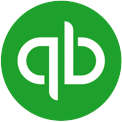What is VAT and How Does It Work in South Africa?
Before we dive into how to calculate VAT it’s useful to answer some common questions.
Firstly, how much is VAT in South Africa? The current standard VAT rate in South Africa is 15%. This means that for every R100 of goods or services sold, R15 is added as VAT.
So what is VAT? Value-Added Tax is a consumption tax that’s applied to the supply of goods and services in South Africa. The tax is collected at each stage of the supply chain, usually including manufacturer, wholesaler, retailer and finally consumer. This ensures that VAT is added to the price of goods and services as they move through the production and distribution process, not just at the point of sale.
South African businesses are responsible for collecting and paying VAT. They must be registered for VAT, charge it as part of their sales, and submit the total amount to the South African Revenue Service (SARS). Therefore, consumers bear the cost of VAT as part of the prices they pay for goods and services.





